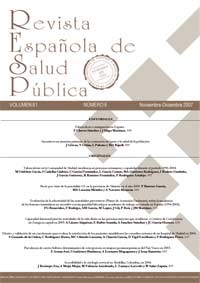More than thirty years of illicit drugs in Spain: a bitter story with some messages for the future
Abstract
The phenomenon of illicit drug use in Spain during the last thirty years has been marked by the extremely serious consequences of heroin use (mainly injecting). More than 300.000 persons were treated for heroin dependence, 20.000-25.000 died from overdose, 100.000 became infected with HIV through drug injection and quite more with hepatitis virus. Some of these consequences can be attributed to the delay in the implementation of effective interventions, such as methadone maintenance treatment (MMT). Currently, the decreasing number of injectors and the positive effects of interventions, mainly MMT, have led to an important decline of the mentioned health problems. However, overdose mortality remains very high (more than 700 deceased per year), prevalence of both HIV and HCV are still high among injectors, and consequences of chronic liver diseases are emerging. In the last years the use of cocaine and associated problems have increased a lot. Nowadays there are more than 100.000 weekly cocaine users, 25.000 persons are annually treated from cocaine abuse or dependence, and cocaine has an important impact on medical emergency services, while its impact on mortality is unknown. Both cannabis use and related problems are increasing too (there are half a million of daily users). We propose to maintain and to strengthen harm reduction programs (MMT, syringe exchange, save-use and injection rooms, hepatitis A and B vaccination, etc.), to urgently develop specific strategies targeted to reduce overdose mortality and cocaine related problems, and to re-evaluate the effectiveness of preventive and supply control strategies.Downloads
Published
2008-03-17
Issue
Section
SPECIALL COLLABORATIONS

